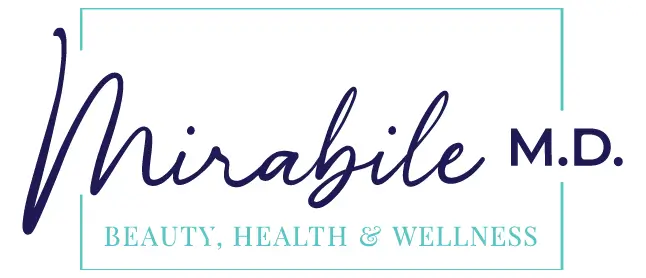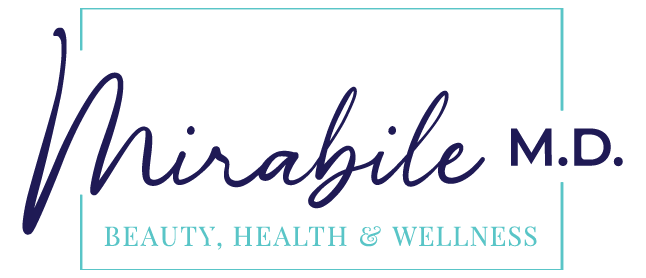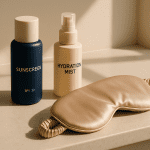Whether you’re battling acne, sun spots, wrinkles, or dullness, chemical peels offer one of the fastest ways to refresh your skin. But not all peels are created equal. If you’ve been wondering about VI Peel vs. Other Chemical Peels, this guide will help you compare benefits, downtime, and results—so you can make the smartest choice for your skin type and lifestyle.
Jump To:
TLDR – Quick Guide
- VI Peel is a medium-depth, medical-grade peel ideal for pigmentation, acne, and aging
- Other chemical peels range from light (glycolic) to deep (phenol) and offer various benefits
- VI Peel combines multiple acids with minimal downtime and is safe for all skin tones
- Traditional peels may require more downtime or be better for specific concerns
- Your best choice depends on your skin goals, pain tolerance, and downtime availability
Detailed Breakdown
What Is a VI Peel?
The VI Peel is a proprietary blend of TCA (trichloroacetic acid), retinoic acid, salicylic acid, phenol, and vitamin C. It penetrates to the dermal layer for targeted treatment of issues like melasma, acne scarring, and fine lines. It’s praised for being effective yet gentle, with little to no downtime and minimal discomfort.
VI Peel Highlights
- Safe for all Fitzpatrick skin types (including darker skin tones)
- Typically involves 5–7 days of mild peeling
- Great for acne, hyperpigmentation, and age prevention
- Can be repeated every 4–6 weeks for cumulative results
What Are Other Types of Chemical Peels?
“Other chemical peels” is a broad term that includes a range of formulations and depths. These vary from light peels like alpha hydroxy acid (AHA) and glycolic acid, to deeper options like phenol or Jessner’s solutions. Each has a specific use case depending on the severity of your skin concern.
Types of Peels and Their Use Cases
- Light Peels (AHA, glycolic): Mild exfoliation, brightening, no downtime
- Medium Peels (TCA): Target sun damage, moderate wrinkles, age spots
- Deep Peels (Phenol): Used for deep scars and severe wrinkles—requires significant downtime
- Jessner’s Peel: Combats acne and mild pigmentation; moderate peeling
VI Peel vs. Other Chemical Peels: Side-by-Side Comparison
| Feature | VI Peel | Other Chemical Peels |
| Depth | Medium | Light to Deep |
| Downtime | 5–7 days mild peeling | Varies (none to 2+ weeks) |
| Skin Tone Compatibility | Safe for all skin types | Some deep peels not ideal for dark skin |
| Pain Level | Low discomfort | Varies by peel strength |
| Frequency | Every 4–6 weeks | Light peels monthly; deep peels annually |
| Best For | Acne, pigmentation, fine lines | Dullness, wrinkles, scarring, sun damage |
Who Should Choose a VI Peel?
If you want noticeable results without downtime, and especially if you have a darker skin tone or sensitive skin, VI Peel is an excellent choice. It’s a go-to for those who struggle with acne, melasma, or early signs of aging but can’t afford to take a week off for intense peeling or recovery.
Ideal Candidates for VI Peel
- Teens or adults with active acne or post-acne discoloration
- People with sun spots, melasma, or hormonal pigmentation
- Busy individuals seeking minimal disruption with consistent results
Who Might Benefit More From Traditional Peels?
Deeper peels might be better for clients with more advanced aging concerns or deep acne scars. If your goal is complete resurfacing or aggressive anti-aging, a TCA or phenol peel (under professional supervision) could deliver more dramatic results.
Considerations for Other Peels
- May require sedation or prep for deeper peels
- Not recommended for darker skin types (risk of post-inflammatory pigmentation)
- Best suited for lighter skin and deeper textural issues
Key Takeaways
- VI Peel vs. Other Chemical Peels comes down to your skin concern, downtime tolerance, and aesthetic goals.
- VI Peel is safe, effective, and ideal for all skin tones—especially if you want consistent improvement over time.
- Traditional peels still have their place, particularly for deeper wrinkles or severe sun damage.
- Always consult with a licensed skincare provider to match the right peel to your skin’s current condition.
FAQs
Is the VI Peel painful?
Most patients describe it as mildly tingly or warm, but not painful. The formula includes a numbing agent that minimizes discomfort during application. Peeling typically begins around day 3 and lasts a few days.
How soon will I see results from a VI Peel?
You’ll notice brighter, smoother skin within a week. For deeper concerns like acne scars or melasma, multiple treatments are recommended. Results build over time with consistency.
Are chemical peels safe for darker skin tones?
Not all chemical peels are safe for darker complexions. However, the VI Peel is specially formulated to work on all skin tones without triggering hyperpigmentation. Always consult with a qualified provider for customized recommendations.
How often should I get a chemical peel?
Light peels can be done monthly, while VI Peel is typically spaced 4–6 weeks apart. Deeper peels may be performed once or twice a year due to the intensity and recovery time. Your skincare goals will determine the best frequency.
Can I wear makeup after a VI Peel or chemical peel?
Mild redness or swelling is normal after many It’s best to avoid makeup for at least 3–5 days post-treatment, especially during active peeling. Letting your skin breathe and heal improves results and reduces the risk of irritation. Your provider will give specific aftercare instructions based on the peel type., but if you have severe or persistent symptoms, contact your provider for advice.








